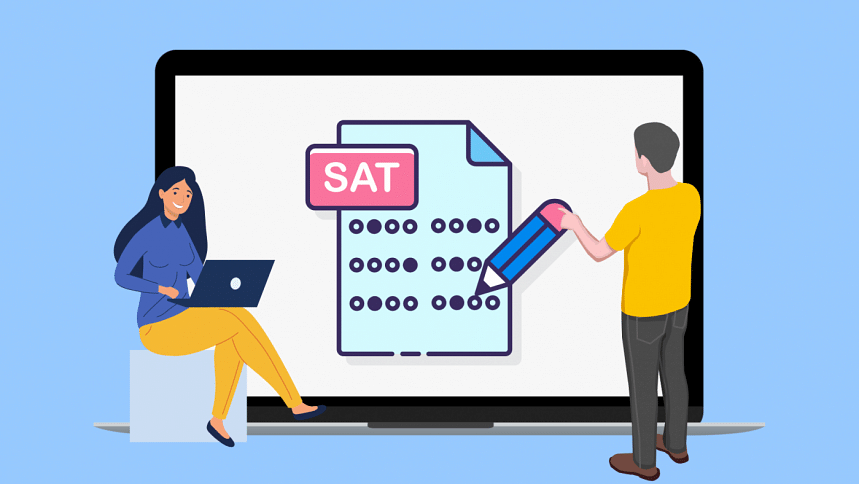A definitive guide to the digital SAT

The SAT, or the Scholastic Assessment Test, is a standardised test conducted by the College Board that is needed for undergraduate university admissions in the United States. Until very recently, the SATs were taken by paper. However, a few years back, the College Board announced its intentions of fully digitalising the SATs and the very first digital SAT was administered internationally on March 11, 2023.
If you are thinking of applying to universities in the US and are confused about the new SATs, here are a few guiding points for you.
The key differences between the digital and paper SAT
While the previous SATs required students to physically solve the paper and write in the answers on an answer sheet, the digital SATs are conducted through an app named Bluebook where you can digitally access the paper and input your answers.
The paper SAT consisted of an English section and a Math section, with them being divided into two sub-sections each – Reading and Writing, and Calculator and Non-calculator. The digital SATs also consist of two sections but they are divided into two modules each and the two modules have no difference between them in regard to the pattern of questions. Both the English modules have 27 questions each and both are 32 minutes long. The Math modules have 22 questions each, and are both timed at 35 minutes.
A major reason behind students struggling with the previous SAT was its length of over three hours. The digital SAT is comparatively shorter at 2 hours and 14 minutes, and there is a 10-minute break between the Math and English sections.
The digital SAT also claims to be adaptive, which means how well you do on the first module for each section determines the difficulty level of your questions on the second module.
The style of questions is a little different now. Instead of focusing on Reading and Writing skills separately, the digital SAT tests your evidence-based reading and language skills simultaneously. The English section, which previously had long passages with multiple questions from each passage, has been altered so that it contains smaller passages and only one question per passage. This makes it easier for people who struggle to keep their attention perfectly attuned to stay focused and means that you will likely find the answer to your evidence-based question with less searching.
The Math section doesn't have many differences in terms of question pattern. The big change is the fact that students can use calculator in both the modules as opposed to before when its use was restricted to one module. The app, Bluebook, in fact has a built-in graphing calculator that students can use in addition to their own approved calculator. The percentage of student-generated responses as compared to multiple choice answers is also higher now in the Math section.
The key skills required to excel at the SATs remain roughly the same as before.
How exactly do you sit for the SATs?
In order to register for the SATs, you have to head over to the College Board website, create an account, select a session and then proceed to fill in a form and pay a fee (USD 100 for the March session). A few different test centres are available and you get to choose a location which is convenient for you.
During registration, they provide you with the necessary information about your testing device. You have to bring your own testing device – a laptop or a tablet – to the physical testing centre. If you don't have a device of your own, you can request a device from College Board and the testing centre will arrange one for you. My testing centre had charging portals available, but it is advisable that you take a fully charged device with a battery life of at least three hours. You will be provided with scratch paper by the invigilator.
How can you prepare for the digital SATs?
The best way to prepare for a test that is as dependent on your time management skills as the SAT is to practise. Khan Academy, in collaboration with College Board, has an official digital SAT prep course that is free of cost. Four full length mock tests are available on the Bluebook app. Once you take them, the app marks them digitally and provides you with a score from 400-1600. Doing these will give you a better idea of the question pattern as well as the areas where you may need to put in more effort.
Zaima hopes she did well on her SATs. Wish her luck at [email protected]

 For all latest news, follow The Daily Star's Google News channel.
For all latest news, follow The Daily Star's Google News channel. 











Comments